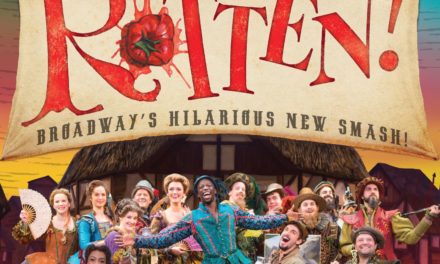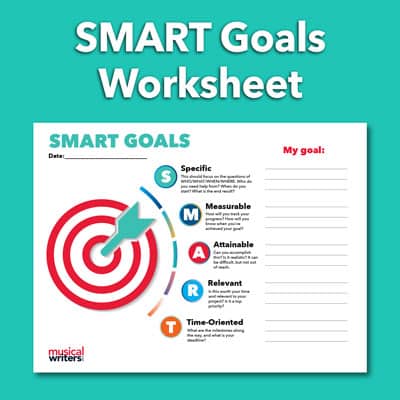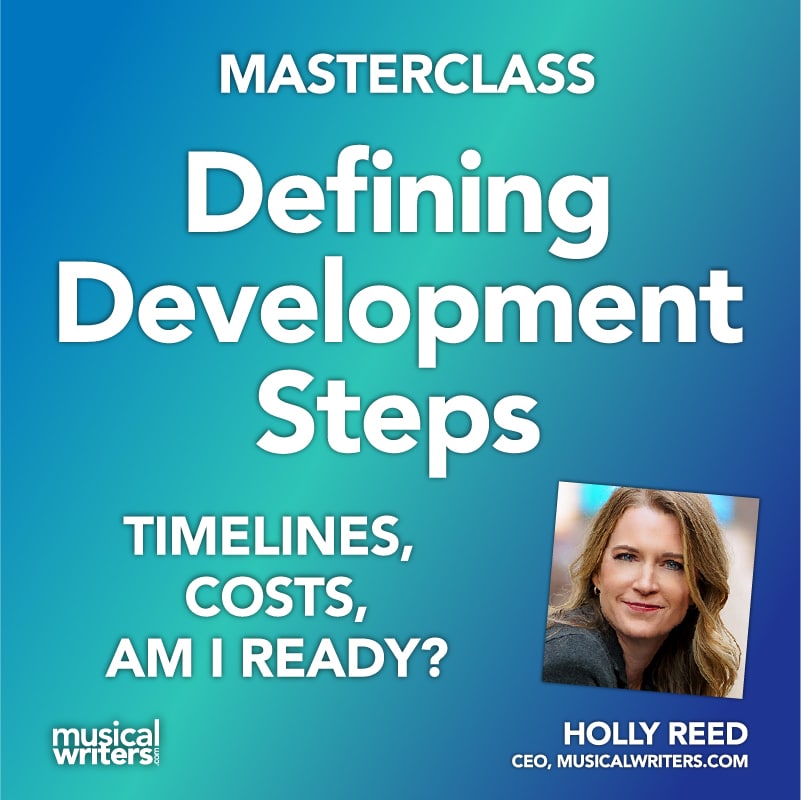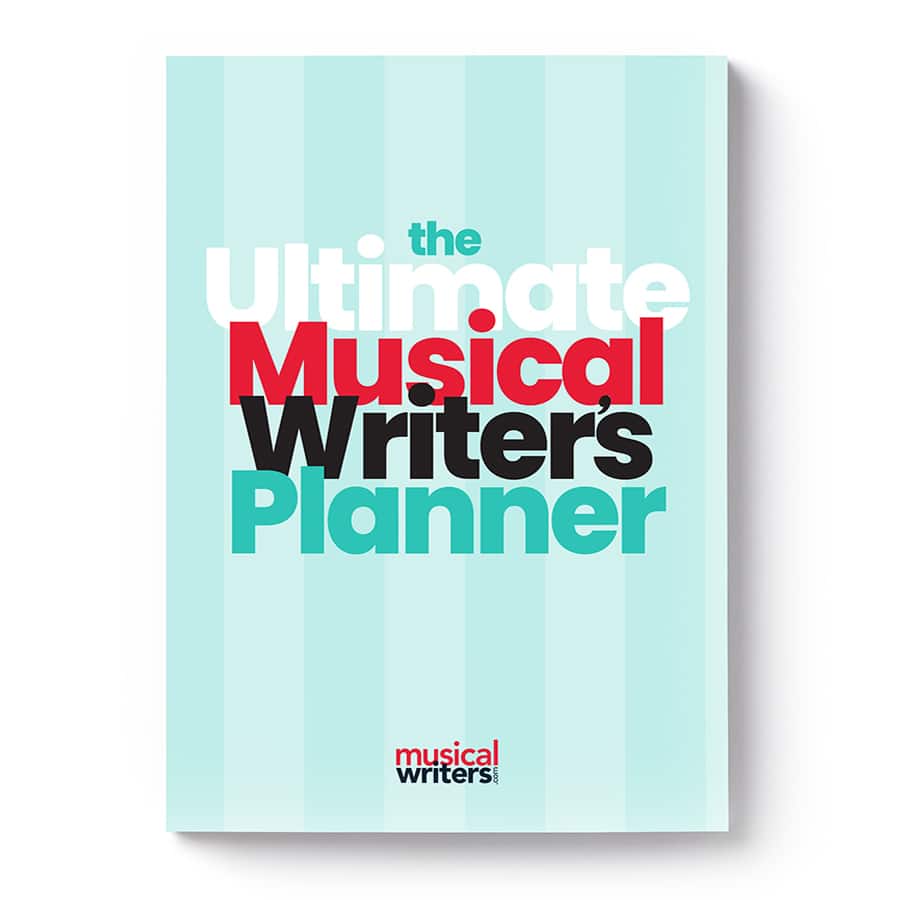In this guest post, writer Steve Cuden sheds light on the early phases of writing a new musical, including writing a logline, premise, beat outline, and story treatment or synopsis. When you complete these pieces of the writing puzzle, you’ll have something substantial to share with potential collaborators, as well as a good foundation for further work. Note that the term “treatment” is used in many ways, from a brief story overview to a full-blown story summary. Here we are using it to mean a document written in present tense that reveals how the audience will experience the flow of the story.
Anyone who has ever attempted to climb a steep, rocky mountain knows exactly how tough a task it is, how long it takes, and how dizzying the experience can be. So many things can go wrong along the way; so many opportunities to slip and fall. To attempt such a journey without mapping a reasonable path prior to striking out can be incredibly foolhardy. Only the bravest, most experienced among us would take on such a task without knowing in advance which way presents the greatest chance of success.
Writing a musical requires no less foresight. Trying to create a musical without a solid plan is likely to lead to multiple unsuccessful starts, and a good chance of outright failure due to not knowing which way to proceed in the telling of the tale.
One excellent way to avoid some of the pitfalls a musical creator may face is to spend a serious amount of time working out the story in some detail prior to writing the libretto. There are well-known steps that can make writing the book, lyrics, and music easier. Not easy, mind you, easier. It’s still going to be seriously hard work, but with thoughtful planning the process can be more focused and less confusing.
Starting with a Logline
Where does one start? First, whether or not you are adapting an underlying work or an original concept, write what’s called a “logline,” a term that comes from screenwriting, but is fully applicable to most musicals. Write a paragraph of no more than five sentences that describes the story’s beginning, middle, and end and includes the protagonist, antagonist, a hint at how the story unfolds, its underlying conflict, and a good clue to how the whole thing resolves.
Here’s an example of a logline found in my book, Beating Broadway. This one is from a show I created called, Jekyll & Hyde, The Musical: “When a brilliant doctor discovers a chemical mixture that he believes will cure madness, he is denied the right to experiment on inmates of the insane asylum. He opts to try the chemical on himself unwittingly unleashing his murderous inner self. Unable to stop either his uncontrolled transformations or the numerous murders committed by his evil alter ego, the doctor must face the ultimate solution to his dilemma through his own death.”
A good logline takes some skill to write, but can work wonders for your decision-making process. It will help you figure out if the story is viable enough for you to invest your time in that next brave step—writing a premise.
Writing a Premise
Premises expand the logline, telling the tale in prose so that you can better envision the story a bit more expansively. A premise can run anywhere from two pages to six or seven pages in length. It should read like a short, compact version of what will ultimately be turned into a much longer piece. A useful premise should hit the highlights of the story, including all seven structural plot points: normal world, inciting incident, point of no return, midpoint, big gloom, climax (and catharsis) and new normal. Writing a premise forces you to slow down and consider the story’s overall arc. Premises help you think about a story globally before you waste a lot of time on even more detailed efforts.
After writing the premise, if you remain excited by what you’ve written and convinced you really have something worthy of further development, then you will want to move with a sense of confidence to the next step—writing either a detailed beat outline or a treatment or both.
Beat Outline
A beat outline digs deeply into the nitty-gritty of what will happen in the story. It’s an opportunity to flesh out the protagonist’s throughline (the story’s spine that your hero will follow) and how his or her tale will ultimately conclude, hopefully delivering to the audience a powerful resolution and catharsis. Most importantly, a good outline will explore and expose the story’s ups and downs, the many obstacles for the protagonist to overcome, the overall action as it rises, and how the protagonist deals with all those struggles (both internal and external) that he or she will face.
In Beating Broadway, you will find thirty-five classic Broadway musicals and five famous movie musicals laid out in beat outline form. Studying shows broken down in this way can be extremely enlightening, especially if you are writing a musical that may be similar in tone or genre to something that has been successfully produced.
Most musicals contain between forty and sixty story beats, but there are no rules here. Regardless of the number of beats, almost every Broadway-bound musical will arrive on the Great White Way with a running time of approximately two hours and thirty-five or forty minutes (including intermission). Your story must be big enough to fill that time while not exceeding it.
Treatment or Synopsis Writing
Beyond the beat outline, a treatment is an excellent way to further develop the story. A useful treatment may run anywhere from ten to thirty double-spaced prose pages. It will indicate where scenes begin and end, the placement of songs within the show’s structure (though it may be helpful, it’s not required that you spot songs at this juncture), where the intermission lands, and so on. Ideally, a treatment should also include every structural milestone. Most importantly, a treatment ought to reveal how the characters will interact emotionally during their endlessly goal-driven, conflict-filled journey.
Writing a treatment is one of the most essential and powerful tools in a writer’s arsenal. A treatment is likely to make the challenging task of writing the book, music, and lyrics feel less like a voyage into uncharted waters and more like you are following a familiar, well-worn path of your own making. I highly advise that you take your time and get the story right before plunging into writing the libretto.
May you have great success in writing the world a grand new musical for all of us to enjoy!


















